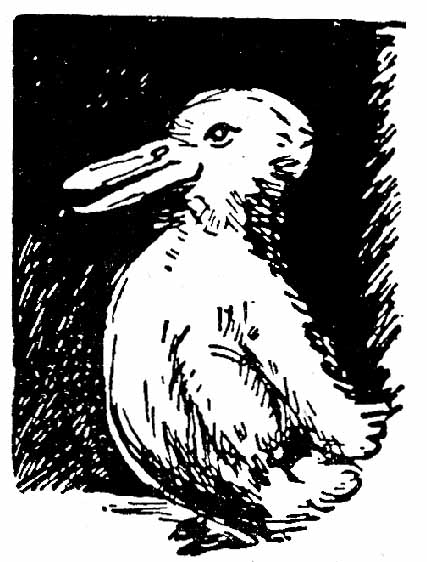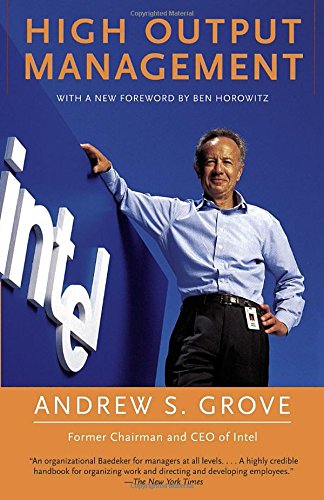A few months ago the CEO of the company I work for shared an article about “Task-Relevant Maturity”. The author of the article elaborates on Grove’s High Output Management ideas on the matter and shares his own takeaways on that concept. My boss’ intention by sharing the article, I think, was for me to identify ways to increase task-relevant maturity for certain tasks my team performs.
I found the concept interesting so I decided to get a copy of High Output Management. I am very happy I did. The book is very short, easy to read and full of accesible examples, mostly from Grove’s experience at Intel. What I like the most is that Andy Grove directs himself to middle managers emphasizing their roles as educators, as leaders withing their units and as enablers for their subordinates.
Management is a Team Game
With this article I want to share some quotes from the book, mostly from Part II – Management is Team Game. I present the quotes in no particular order. They contain my opinion, understanding or personal story that make me relate to them.
“For leading indicators to do you any good, you must believe in their validity. ”
Valid, trustworthy information will transform into decisions, those decisions will turn into actions. So before taking any action, ask yourself: Do I trust the information I’m getting from others? Even more important, Do I trust the information I am generating and reporting to others? To make sound decisions and enable others to do so, your answer to both must be positive.
“ I have found the Stagger Chart the best means of getting a feel for future business trends. ”
Updated month to month this can help you follow your pacing on whatever your team or company output is producing. Money, cars produced or your collage GPA, you can be track all of them in a single, easy to read, 12×12 matrix. Each month you make a prediction of the upcoming months. Each month’s prediction is made by row. As a new month goes by you add a new row in your matrix. They give you great visibility and let you react and adjust your operation monthly (I guess they could have a shorter timespan). I have seen these charts in action and they look something this.

“ Typically, you will find that many steps exist in you work flow for no good reason. Often they are there by tradition or because formal procedure ordains it, and no practical requires their inclusion. ”
I have found myself in this situation. My boss calls me to ask: “Boris, why do we do this task in such way?” It is a horrible thing to think hard and not being able to get back with a smart answer. So try not to get into that position. Every now and then think if there is a smarter way to do things you are already doing. You will be surprised how many times you can improve in single silly thing.
“ Reports are more a medium of self-discipline than a way to communicate information. Writing the report is important; reading it often not. ”
Today, more than ever, I see ever the truth on this. The company I work for has a very interesting way of reporting. Each functional unit sends out a weekly report to the whole company. In my case writing down the report offers three important things. First, it lets me track my team’s work and progress. Second, it brings important issues to the top of my mind so we are constantly reminded what to tackle next. Third and most important, it gives structure to thoughts, to ideas and to “informal” conversations among teams.
“ You should say no at the outset to work beyond your capacity to handle. ”
This for me is specially hard. More than once I have tried to take on more than I can handle, juggling between one to many commitments. If you are like me you will probably stop sleeping to try to get the result you want. In the long run you will end up missing a deadline, disappointing a friend or taking a toll on your health. Nevertheless I do think that before you start saying no, you need to understand what “your capacity” really is. In recent years I have discover that things that seemed imposible to be are now routine.

“ Managerial Output = L1 x A1 + L2 x A2 + Ln x An ”
The equation reads, the Managerial Output is equal to sum of all activities times their leverage (impact). Andy Grove states that given this equation you can increase your output by increasing one of two: (1) the rate at which you perform any given activity or (2) the leverage each activity has. Optimizing that equation is vital! I do not think this applies to managers only, taking on each activity as diligently as possible and making sure each activity adds the highest value possible is everyone’s responsibility.
“ The “delegator” and the “delegatee” must share a common information base and a common set of operational ideas or notions on how to go about solving problems. a requirement that is frequently not met. ”
All members in your team should embrace a “way of thinking”; a given style for solving problems; a framework we may call it. I agree with Grove that this is often not met. Assuming wrong premises or working to satisfy a requirement that is not well understood leads to bad results and it happens more often than you think. I think this has an easy solution (also tackled at some point in the book). As a manager you want to be accesible and patient. You want your team to ask questions as often as possible to get reduce ambiguity to minimum. It is your responsibility to make sure all of your team understands the same thing before proceeding into big endeavors.

“ … the value of an administrative procedure is contained not in formal statements but in the real thinking that led to its establishment. ”
It is very difficult to understand why we follow some rules or processes. But Andy Grove states, there was a train of thought and probably a bunch of information to support their establishment. This said, in my opinion, every now and then you should analyze if whatever process you are following still makes sense. I have found that some processes might not make sense now but they did at the time they were established. It is your responsibility to update them to fit your current needs.
“… to be useful a key result must contain very specific wording and dates, so that when deadline time arrives, there is no room for ambiguity.”
I am going to include my cultural background to illustrate this point. In Latin America it is very common to say “a ver cuando nos vemos”, which roughly translates “we should hangout soon”. Then I got a couple of German friends. I said something similar and they said: “Sure let’s set a date and a place right now”. Their attitude, I think, illustrates this point. On the managerial side, the company I work for adopted the OKR format a couple of years ago with very good results. And as stated by Grove we use dates, metrics and actions to reduce ambiguity to a minimum.
“ The single most important task of a manager is to elicit peak performance from his subordinates. ”
Helping every member of you team to become the best versions of themselves is what I find most gratifying from the manager role. First guiding to perform a certain task. Later helping them to master such task. Finally helping them to take on a new more challenging one. Groove mentions that good managers are teachers and role models not merely performance evaluators so make sure your team grows as you lead them. Both as a subordinate and as a manager I can tell you witnessing such growth is the best feeling ever.
Even when this book is 35+ years old it is still very relevant. I strongly recommend anyone getting into a management role to invest some time on it.

High Output Management by Andy Grove